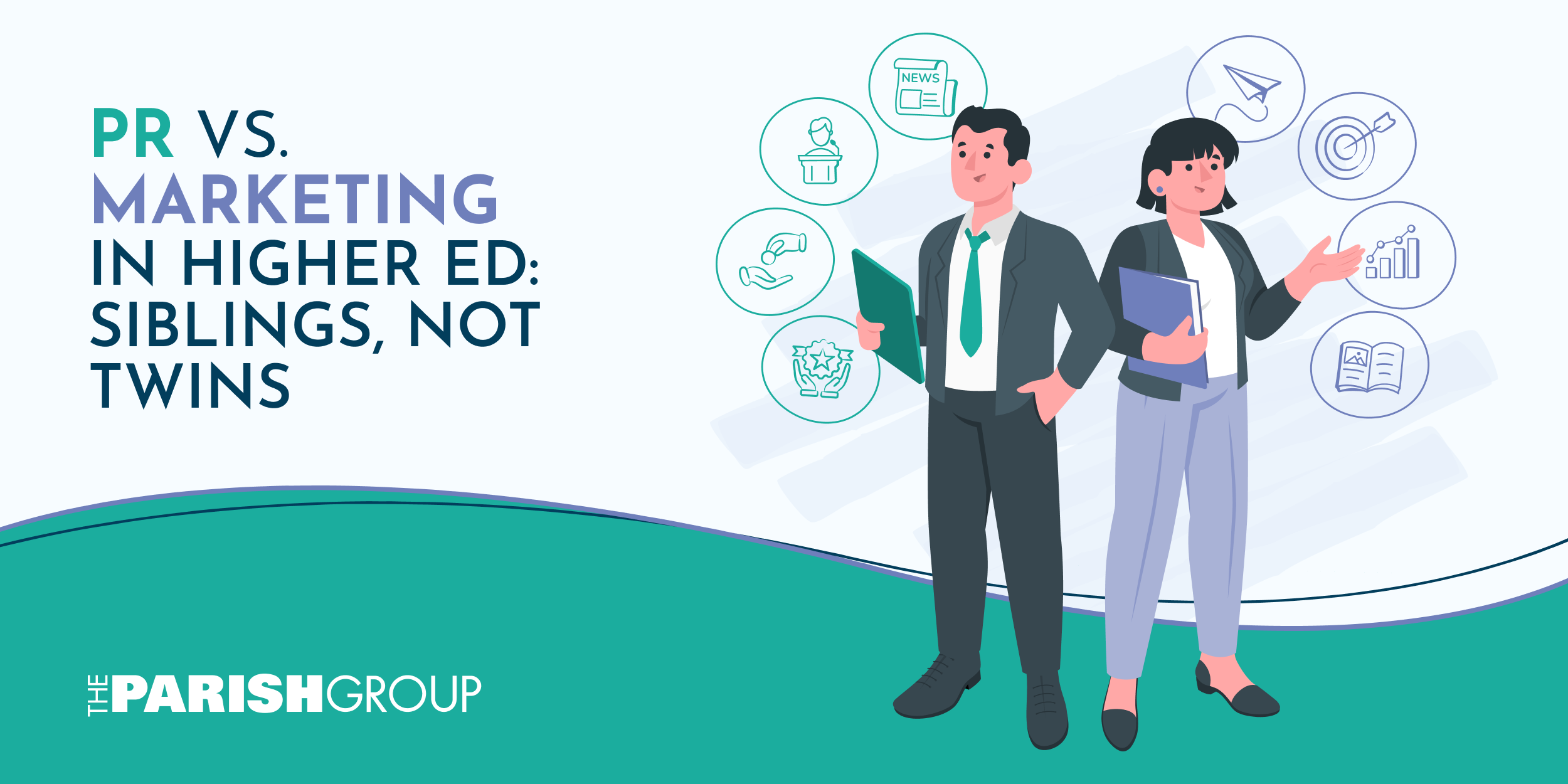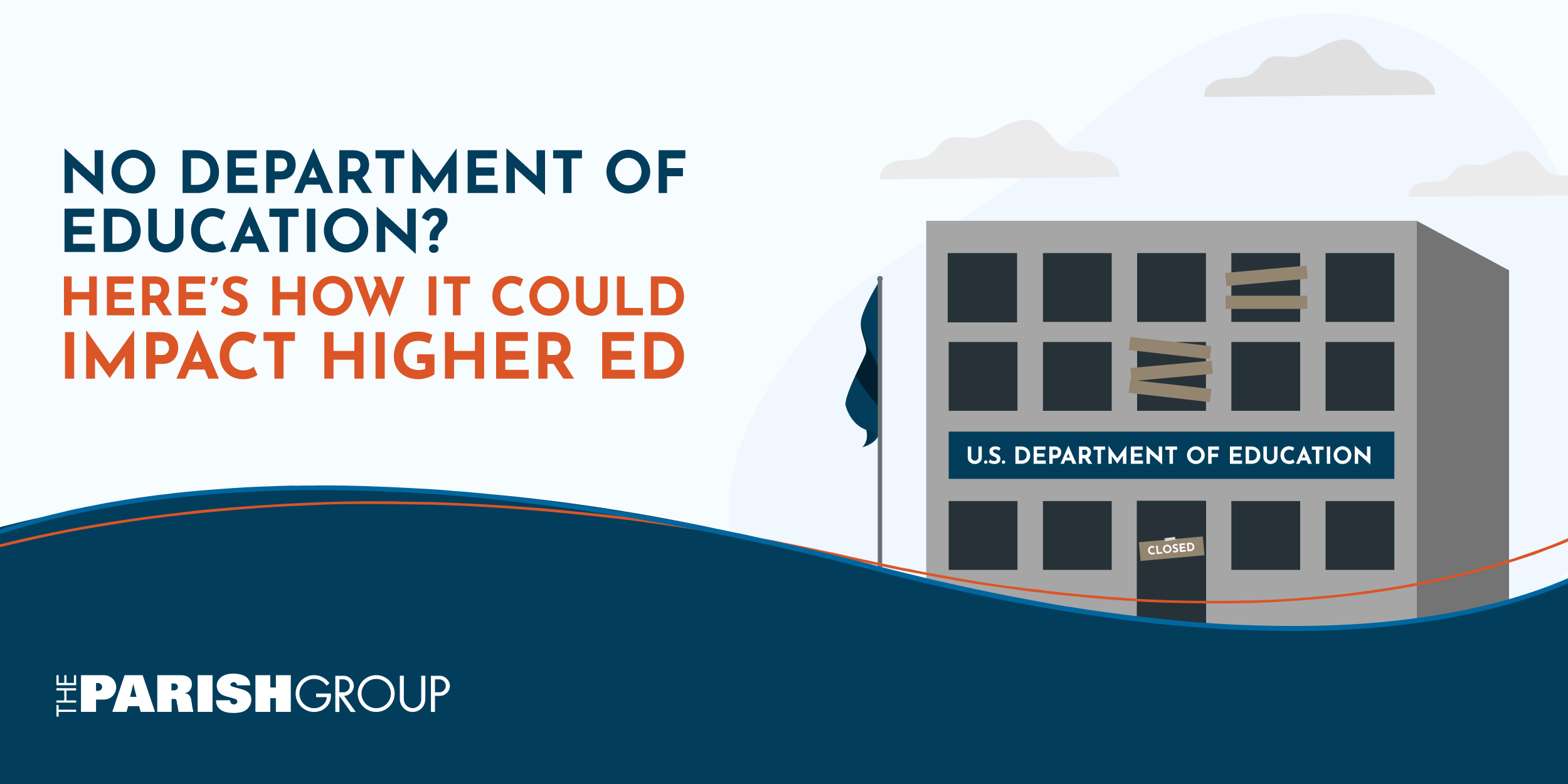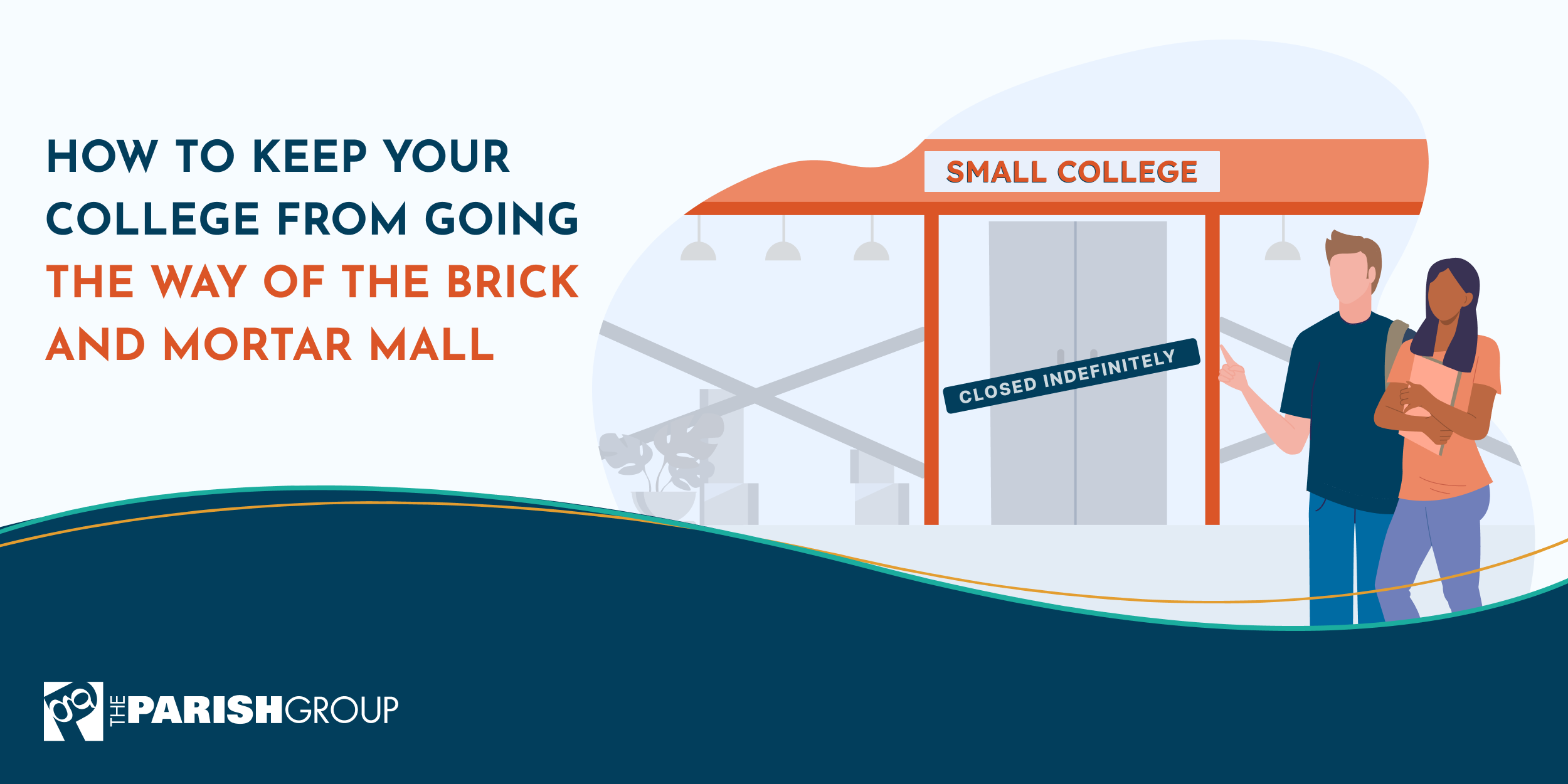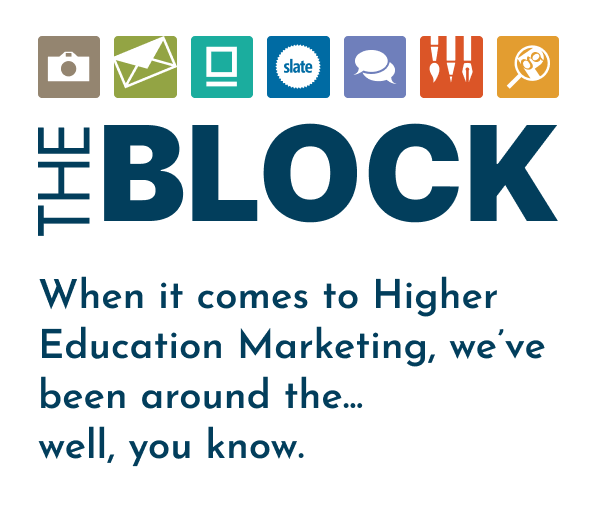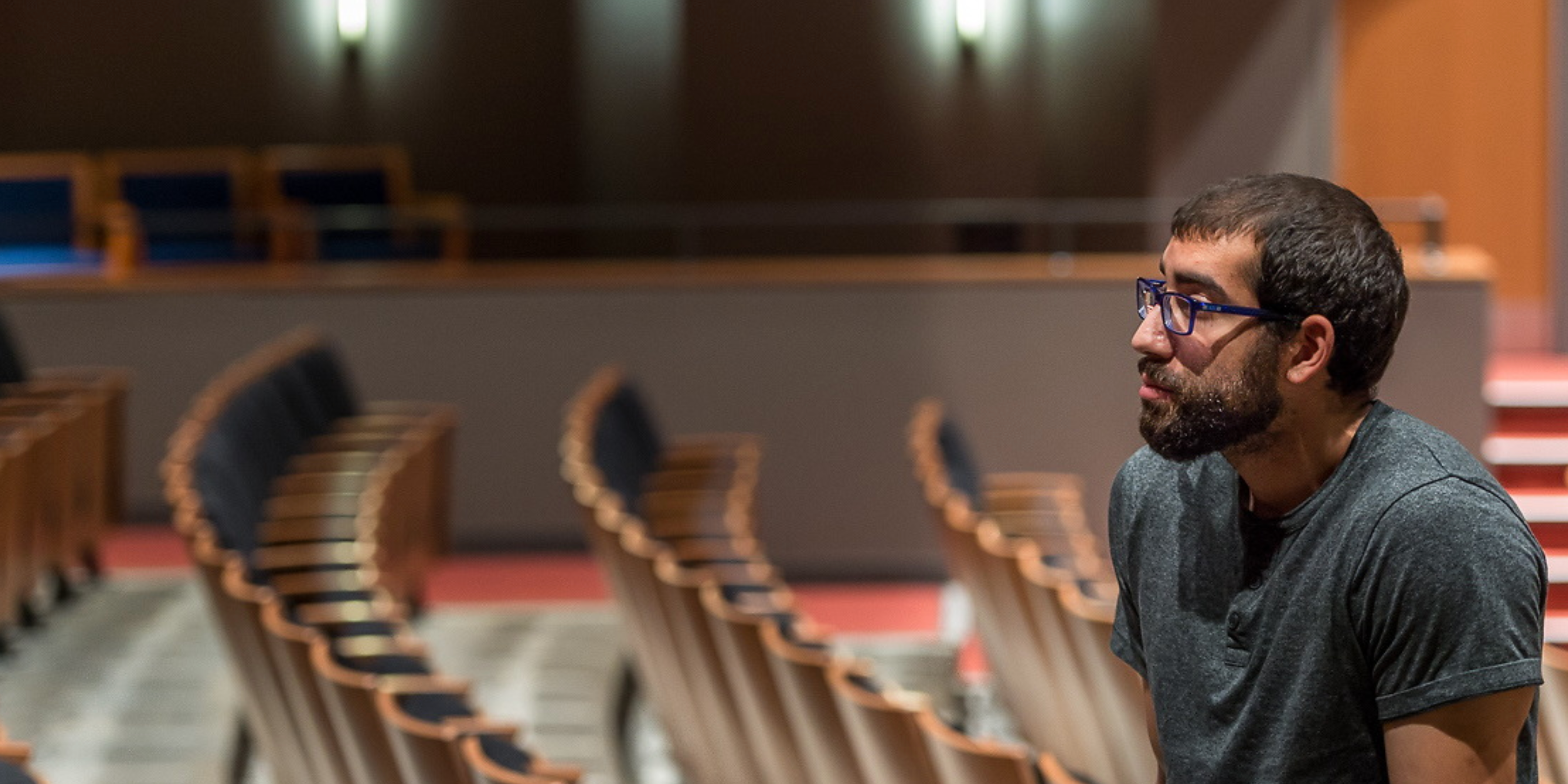
It’s easy to get caught up in our side of the admissions process. Unlike the students we recruit, enrollment managers and higher ed marketers don’t get summers off. We use this time to close one class while reflecting, reassessing, and replanning our strategy for the upcoming cycle.
But with all this focus geared towards the light at the end of the funnel, we thought we’d use this blog post to consider how far our efforts go after a student enrolls.
Meaning: we’re going to do things a bit differently in this blog post.
A Brief Introduction
Hey everyone. This is Julia, the Social Media Manager at The Parish Group.
At this point, you’re accustomed to reading The Parish Group blogs from a ‘we’ company standpoint, but I’m taking over the reins for this one.
I’ve had a lot of fruitful conversations with the admission pros at our company which got me thinking about what happens after we’ve successfully recruited a prospective student.
Once we get them through the funnel and students make their way onto a new campus, it can be easy to feel as though our job is complete. Thus, we start back from the beginning with a new cycle of prospects.
In a time where many American high school graduates are questioning the importance of a college education, it might be time for us to rethink how our enrollment efforts impact a student in the long-run.
Some context: as someone who’s run the gauntlet in both undergraduate and graduate programs and now recently transitioned into higher ed marketing, I’ve seen both sides of the table.
When I was applying to undergraduate programs almost ten years ago, I was certainly of the mindset that in order to succeed, I’m going to need a college degree.
Beyond that, my generation (those teetering between Millennial and Gen Z) deeply felt the impact of the 2008 recession via our parents, where having a Bachelor’s wasn’t enough to keep a job, put food on the table, or cover outrageous gas prices (oh the déjà vu!).
The Need for More Degrees & How Our Promises Really Pan Out
Many folks my age have gone on to earn their Bachelor’s, but also felt it necessary to get a Master’s as well.
Our logic? Everyone nowadays has a college degree, so we need to buff up our education to stand out in the hiring shark tank.
Another reason could be that folks my age don’t feel as though they’re properly prepared for their job industry based on their Bachelor’s alone. Personally, I was in that camp.
I worked minimum-wage retail and hourly-rate teaching gigs between graduating from undergrad to getting my Master’s, because those were the only types of jobs available to me with my level of education.
Then the world got turned upside down by COVID-19. Many graduates who’d just secured a good paying job found themselves laid off.
The trust we had in the education system preaching that a Bachelor’s (and certainly a Master’s) would act as an employment safety net was dissolved.
Thankfully, I found my tribe with The Parish Group six months after completing my Master’s; but I know many people with my same education, skill level, and ability who’ve not been so lucky.
Those who, despite the Great Resignation and thousands of LinkedIn hiring posts, have yet to get their application noticed or even through the door. Those who are making fancy Frappuccinos while their degrees collect dust and dismay.
We’re going to talk in our next blog post about the importance of continuing the relationship with your recruited student beyond that first deposit.
But perhaps it’s time that we face the music: the confidence in a four-year degree is dwindling. Fast.
The Focus on Student Success
We are so fixated on fighting the general lower application numbers in this country (implementing broad search, showcasing shiny branding) that we might be overlooking what many prospective students want to hear:
Job security. Concrete action items. A defined pathway to help students beyond graduation.
We can accomplish this through assessing the importance of new programs and how these programs integrate with a plan for the future. Perhaps adding real world, robust internships as a part of the curriculum and utilizing experiential learning programs could ameliorate this uncertainty.
This isn’t just for the career placement counselors to handle. As marketers, we’re selling an investment that many students take their whole professional lives to pay off.
Shouldn’t we offer them more specific routes beyond fancy statistics and alumni quotes? Schools must define real discriminators that lead to new opportunities in the marketplace and teach their students how to market their skills post-grad.
If we are that initial step towards launching the next generation of students into the workforce, we have to give them more confidence that a degree is in fact the right way to go.
When your students are successful post-grad, you’ll have a larger pool of faithful alumni that want to give back to the institution that helped them succeed.
So collectively, let’s look at how our promises are actually panning out. We can’t cherry pick success stories and sell them as the standard experience.
Institutions must assess and execute what their students are asking for. Selling a pitch that doesn’t consistently deliver is bad practice in business.
These are our customers, after all.


